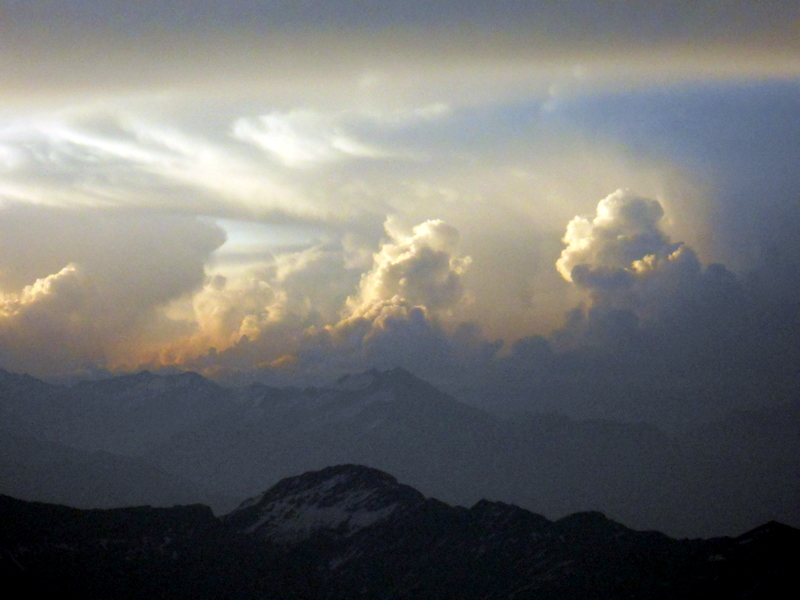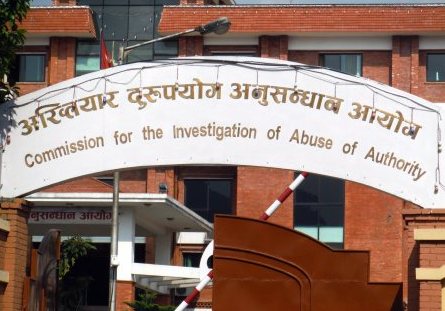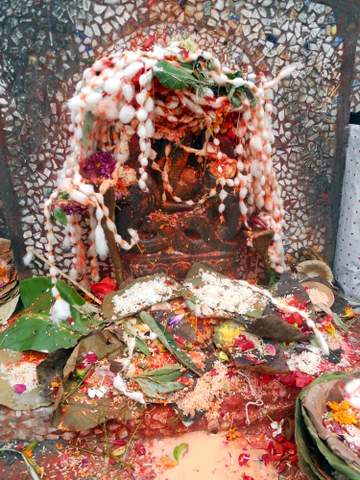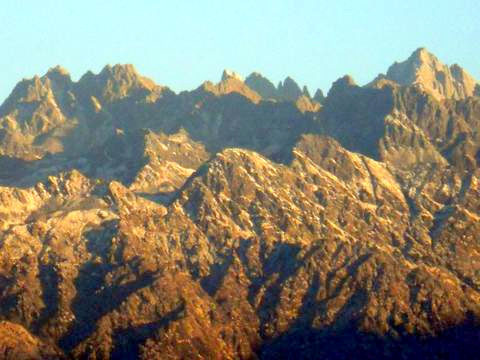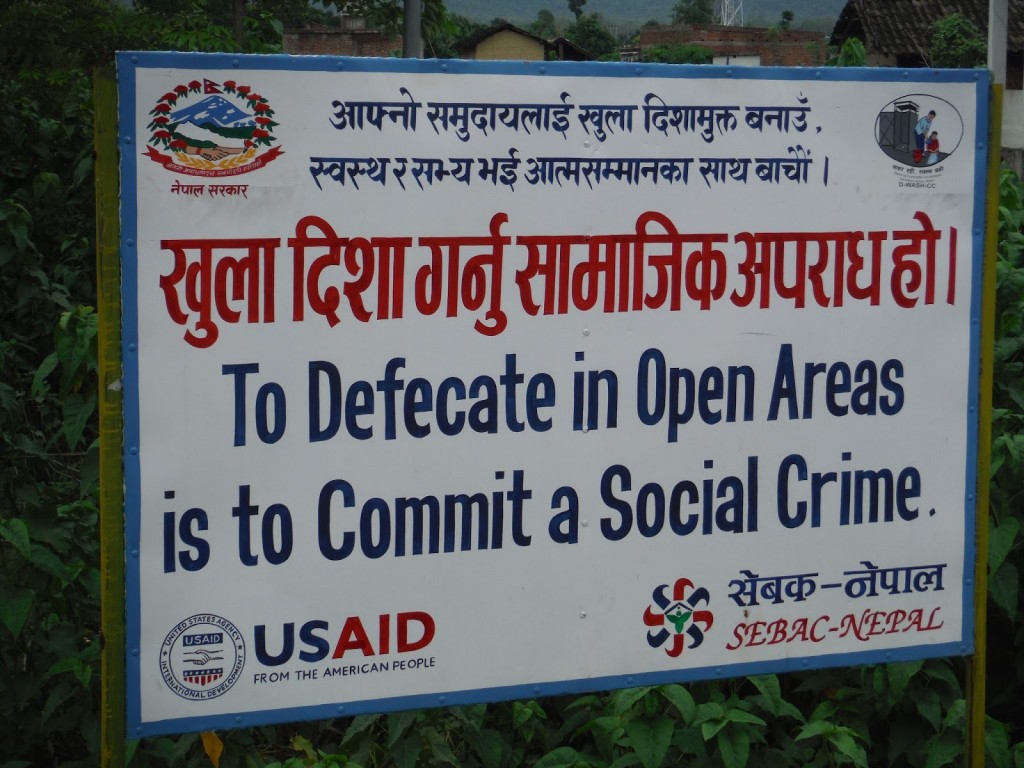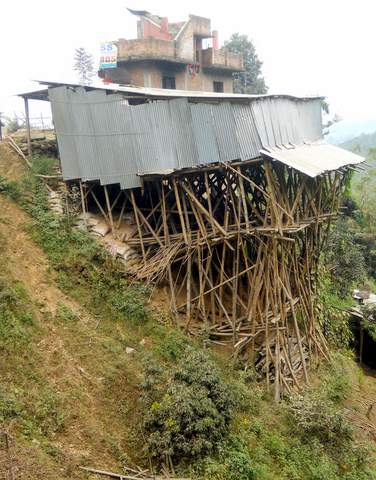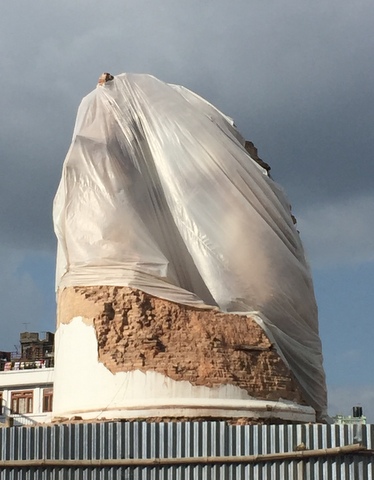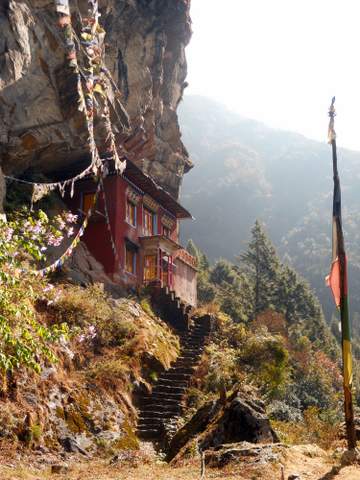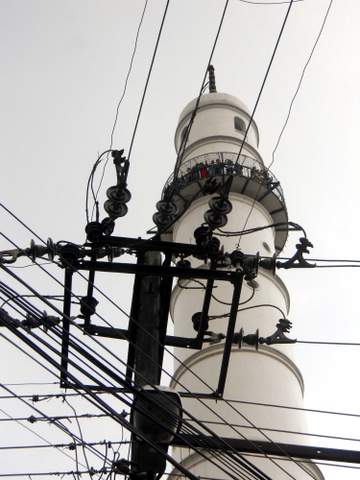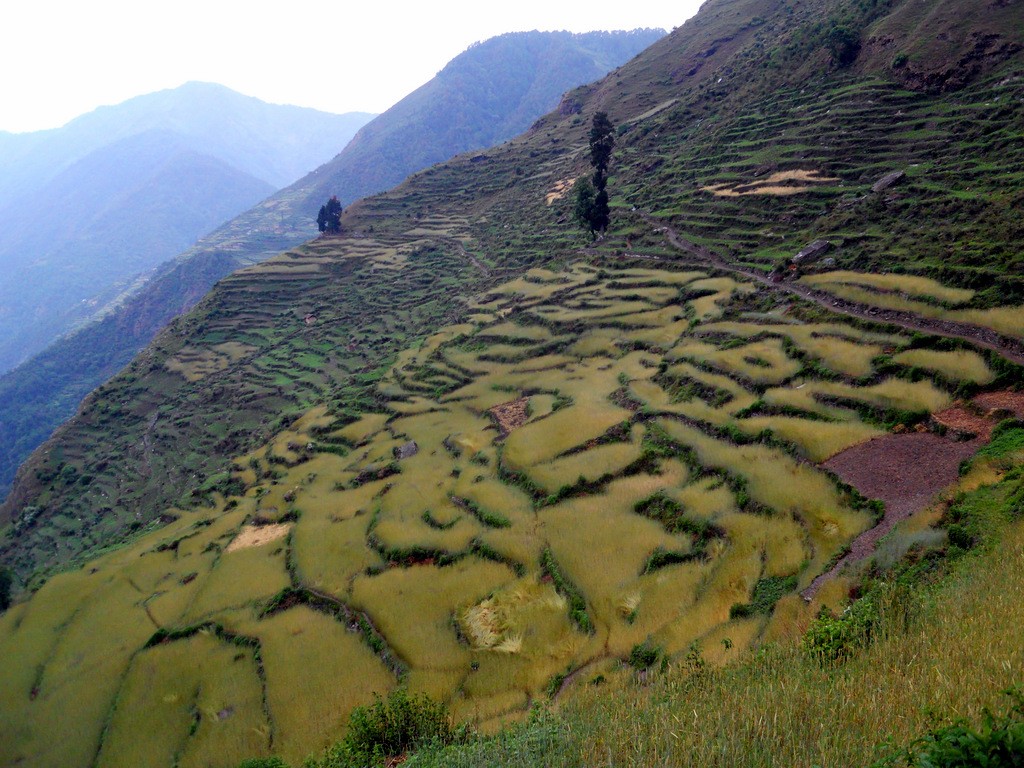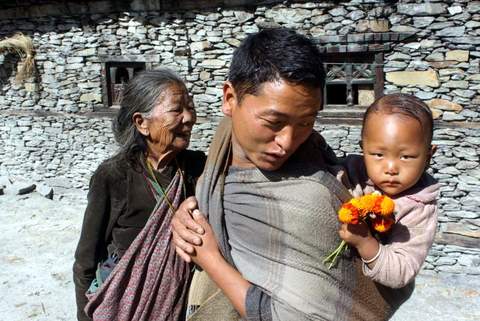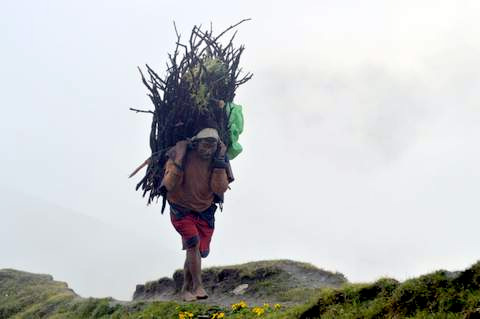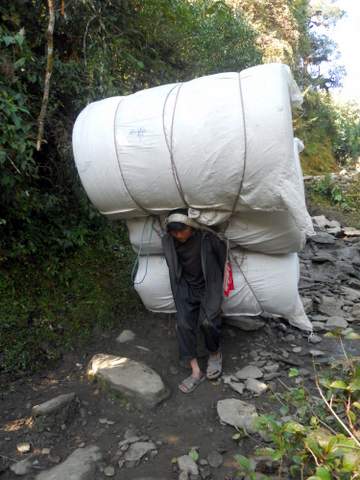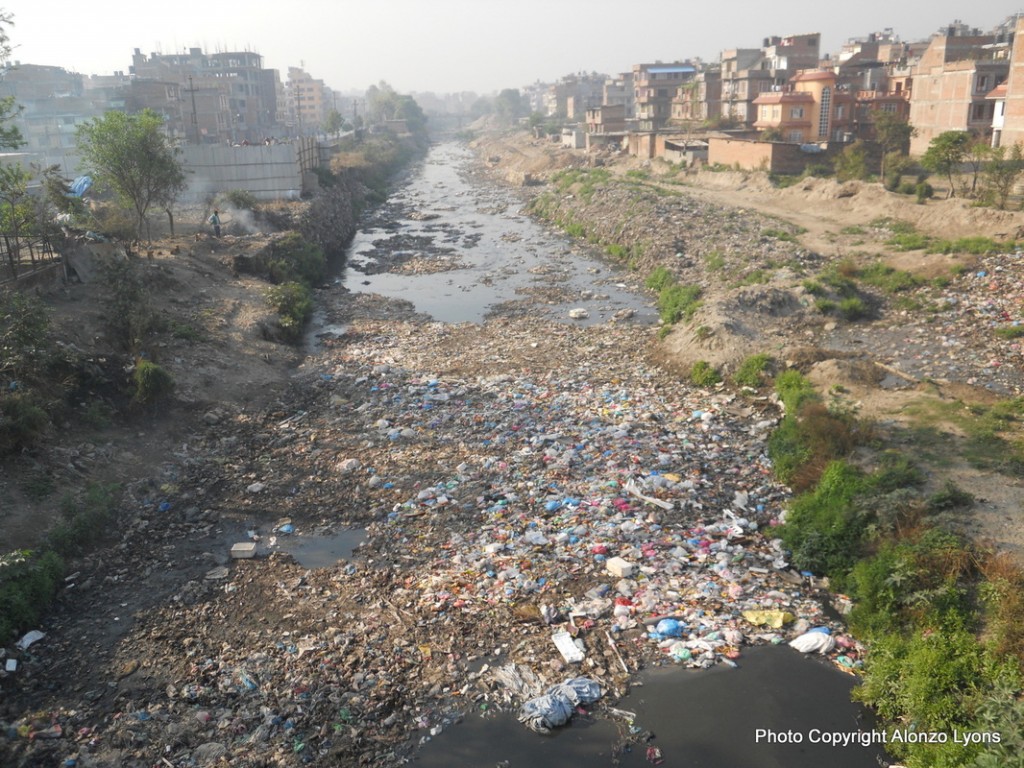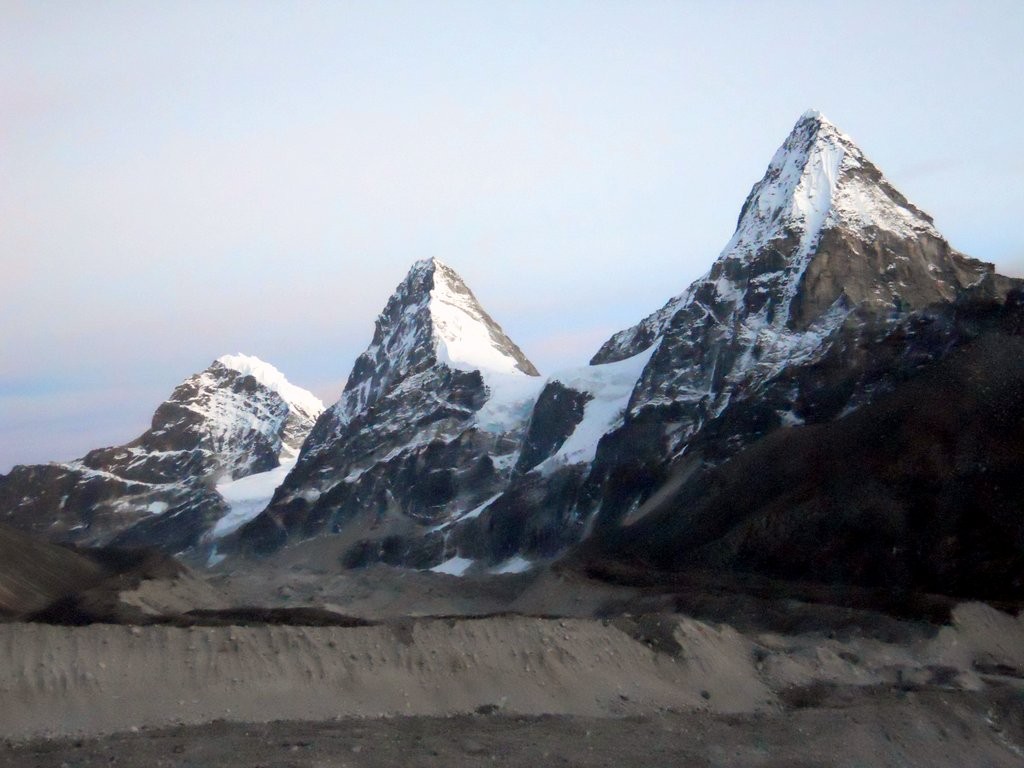I began a journey with Nepal and her people in 1993 and was straightaway humbled and magnetized by the culture, larger-than-life mythologies and warm-hearted hospitality. And with equal magnitude, over the years I began to grasp utter disparities, dualities residing in close proximity and untold sufferings. When the earth convulsed, fractured and crumbled structures and lives last year, there was more going on than meets the eye—and although in dazed disbelief, in many ways I was not surprised at the inevitable.
Kathmandu is referred to as a ‘living museum’ for a treasure trove of art and architecture, and some of its finest elegance was demolished without a moment’s notice as if by urgent edict of an obscure authority. Mother Nature hammered down in seeming compliance with the resident gods.
Did the local gods finally show displeasure at the wayward direction the country has gone over the centuries since the structures were built—extreme and continual malfeasance of leader after cancerous leader, bureaucrat after cannibalistic bureaucrat, foreign interventionist after unaware foreign interventionist…all cycling through endlessly — all seemingly impervious to the negative impact on the community of their tyranny and the lethal suffering wrought by immorality and ignorance unlimited.
The idea that divine beings did not play a role in nature’s volatile paroxysm in the Himalaya, considered an abode of the gods, might be absurd to many inhabitants of this exotic land where deities are believed to take an active role in earthly affairs as they intermingle with mortals. Adoration and supplication to unseen forces infuses daily life and people openly pray and make ablutions without the slightest self-consciousness even when that means clanging a bell at sunrise to announce with resounding tintinnabulation one’s presence to the temple spirits and beyond.
Majestic Kathmandu Darbar Square is a former royal compound and a contemplative’s haven with mystical temples and the ‘living goddess’ Kumari right there with her family in a simple palace. The daytime setting could easily send visitors into an otherworldly reverie. After twilight, the square’s dim lamps and faraway moon cast eerie, waxing and waning shadows. Ghostly silhouettes of tiered rooftops cut-up oblique angles along the byways and whispered of times gone by. Homeless people gathered under wooden eaves to hunker down for the night.
As dawn’s first rays illumined the timeworn setting, the earliest worshipers of a daily stream of them mumbled matins spiced with incense smoke. Stone foreheads of immobile statues were anointed with vermillion paste, a morsel of food was squashed on silent mouths, marigold flowers were laid at motionless feet, and unblinking icons were petitioned for blessings, guidance and protection.
Rats scurried for cover as vegetable and tea vendors set up around the flanks of the ancient structures. This former palace square had become the focal point of Nepal’s Dashain celebration, a ten-day sanguinary affair in the autumn after the rice harvest. The festival reaches a zenith on the ninth day when innumerable water buffaloes and goats are ritually executed throughout the land. The aim of the blood-sacrifice is to appease Durga (avatar of fierce Hindu goddess Kali) and pay homage to her victory over the demon-buffalo Mahisashur, a victory symbolic of the triumph of Good over Evil.
The most remarkable bloodletting takes place in Kathmandu’s former royal courtyard where rows of animals are beheaded one by one. Good took a severe counterblow in this very courtyard on April 25th 2015 including the annihilation of Kasthamandapa, a grand ‘pavilion of wood’ at an ancient trade crossroads after which the legendary Kathmandu derives its name. The destruction of the city’s namesake is symbolic and not just to the mystically inclined who believe that the gods and restless spirits had become dissatisfied.
Nepal is steeped in superstitions about the interplay between the spirit world and material life. On the southwest outskirts of Kathmandu Valley, hidden in a plunging ravine, Dakshinkali Temple has received the blood of sacrificed animals for over five hundred years. Even the terrifying rite of human sacrifice took place in Kathmandu Valley into the last century. The Hindu pantheon and animist divinities are believed to be easily flattered and responsive to praise and appeals for assistance, yet they are also quick to be upset by trespasses on their domain and all too common human misdeeds.
Nepalis instantly considered the gods’ role in the death and agony wrought upon an impoverished country and destruction of glorious monuments of an era of artistic splendor gone by.
A friend desperately called out on social media after the first quake: Hey bhagwan k nahunu tyo bhaigayo dika lagdo dhat” (Oh god, you aren’t here, you’ve left. [I am] fed up).
Another wrote in broken English, “What a shame on you nature! Once you have created beautiful world and destroying it now! You have taken thousands of your creature from their loved ones, Now rest of them are begging their further life with you but you seems even worse and worst. We can’t take it anymore, Please stop it here get out from our way. We need God now if there it is, save Nepal save Nepalese! #devastatingEQ. #whycreatedifneedtodestroy .“
Was the gods’ wrath delivered by an indifferent Mother Nature to whom humanity has been equally indifferent and destructive? Suffering is intimately part of life here where a belief in fate can lend a passive acceptance to the nation’s many troubles. Nepalis are talented at not only accepting hardship but smiling passively while in the crippling jaws of it in a land where adversity rises with the sun each and every morning and departs long after dusk, if at all. Most of it is completely unnecessary and spawned by unethical office holders and factotums whose actions have kept Nepal in an endless bandh (closure) for the foreseeable past.
The ruling gang with unmerited entitlements rarely accounts for their effects on people outside of kin, kith and a sycophantic entourage who feed off of their crumbs. Unfortunately, the indefinite aid paradigm plays an intimate role by endowing and abetting a dysfunctional system directly and most often indirectly and unknowingly with unshakable ignorance, invincible ignorance.
Many more aid organizations and their agents have swooped in since the quakes, and they are certain that the quakes have harmed Nepal’s economy since they struck over a year ago. Actually, the majority of Nepal, including most tourist destinations were not directly affected at all by the quakes which did tragically affect a small minority of people and landscape.
In fact, the sensationalism around the quakes and pleas for financial help by I/NGOs with accompanying graphic portrayals of damage (to small pockets of the country) has devastated tourism throughout the land. Yes, humanitarian aid was necessary for a relative sliver of Nepal. That said, gratuitous photos and stories posted for months upon months and even up to this day turn away visitors and continue to turn them away and that sensationalism has wrecked a vital component of a feeble economy.
In days of yore, the local people would have mourned and then begun picking up the pieces on their own in the immediate days that followed. They would want to get on with their lives in the aftermath of the tragedy and despite the tragedy. They would have the will power to get on with it. Now, a year on, reconstruction is stalled and many fallen structures remain in ruins. The headlines of The Himalayan Times on the one-year quake anniversary read, Mega Reconstruction Campaign Kicks Off.
‘Kicks off’ one year on?! Actually, reconstruction is still tied up in red tape and appeals for funds one year on. Nothing happens without a pledge of aid funds as per authorities including temple caretakers who profit off the ancient structures. Presently, the powers that be are prohibiting work to be done until funds arrive first. It would go against their self-interest if locals did the necessary job themselves with their own efforts and without outside intervention. If they accomplish any rebuilding before the desired funds arrive then the concern is that the incoming windfall of money would be jeopardized and deemed unnecessary, an opportunity at graft lost. Much earthquake reconstruction is crippled by a donor mentality.
As the game goes, sympathy is elicited by keeping the pile of destruction visible to reinforce the need for assistance, namely financial assistance. The worse something looks the more sympathy and funds it might wrest from donors and the more that can be siphoned off for personal gain. The situation is similar to many of the nominal orphanages in Nepal which are typically some of the most reliable businesses in the aid industry. The owners keep them purposefully decrepit and run-down in order to elicit sympathy and the funds that go with the sympathy. All the while the children, most of whom have parents, suffer terribly and are purposefully kept underfed and neglected, and so it goes with aid entrepreneurs.
Aid funds pass through many grasping hands before reaching stated targets and are largely eaten up by administrators’ salaries and misuse if not outright fraud—the very people meant to be helping the situation are in many instances deepening the suffering. Appallingly, the poorest of the world’s poor are used to solicit funds with the deathly side-effects of keeping an entrenched, corrupt gang in power and bleeding the tourist sector dry in the process.
Regardless of a belief in divine punishment and reward, Kathmandu Valley was already on life support when the earth thundered and reaped even more mayhem. The valley has been on the battle line between the 21st Century and medieval times for decades. Soviet-style construction of poured cement and the local standard of mortar-and-bricks plastered over were inexorably vanquishing ancient architecture and artifacts, yet the birth of modernity was not without disorganized resistance from a fading era. The city appeared to have already been hit by a major earthquake before the quakes of last year (misleading outsiders who arrived after the quakes and do not realize the broken down state of infrastructure prior to the earth’s convulsions last year).
Labor pains were intensified by high population density and a dearth of general services and basic facilities. Semi-controlled chaos has long reigned with daily power cuts, fuel shortages, rationed water and widespread filth among other flagrant problems. Roadway potholes can seem large enough to comfortably land a 747, and frequent mishaps at the country’s sole international airport have become very unsettling, especially to a jet-setting crew of aid workers, expat consultants, tourists and a relatively slim margin of locals wealthy enough to fly along the ramparts of the Himalaya.
Yet Kathmandu Valley has maintained a timeless charm with an Old World mystique among the decadence that has become a curious playground for high-paid I/NGO ‘donor darlings’ and their drinking and ‘fooding’ rumpuses, ‘master’ planning sessions at five-star venues with endless seminars on ‘feasibility’ and ‘capacity building’ … saving the paradise that they have an active hand in destroying with high-salaried shenanigans in spite of good intentions. It took no higher power and no well-paid expats to realize that the honeycombed network of haphazard structures was pathetically overburdened. No expert was needed to recognize the latent danger of an earthquake here. The potential devastation was an open secret whispered about with a grim hope that it would never happen.
Despite that misplaced hope, more than 1000 minor earthquakes occur annually in Nepal with a magnitude range of 2 to 5 on the Richter Scale. It is the collision of the Indo-Australian Plate and the Eurasian Plate that led to the massive uprising of the world’s highest mountain range and Nepal’s greatest natural spectacle, the towering Himalaya, soaring into the heavens. In fact, Kathmandu topped the list as the world’s most earthquake-vulnerable city in a study by GeoHazards International in 2001. The research focused on the following three criteria: building frailty, potential for landslides and floods, and the capability of local authorities for rescue, firefighting, and life-saving operations.
The catastrophic earthquakes that shook Haiti in 2010 and Japan in 2011 raised the outcry for better readiness in Kathmandu Valley. Worries intensified after a 2011 earthquake hit Sikkim, India, just beyond Nepal’s eastern border. The magnitude 6.9 quake killed more than 100 people including six deaths in Nepal. Implausibly, in Kathmandu, three people met their demise when a wall at the British Embassy fell. Another earthquake in 1988 in eastern Nepal claimed the lives of 721 people and 22,000 houses collapsed. The most recent major earthquake to greatly impact the Valley occurred in 1934 with an estimated magnitude of 8.0. Over 4,500 people died at a time when the Valley was sparsely populated and one-fifth of its structures collapsed.
Other than a reinforced wall at the British Embassy, preparedness had improved little since the rallying call of the 2001 GeoHazards report while rural people continually streamed in for a chance at a bigger life in Nepal’s largest metropolis. Structures were put up with building code as an afterthought if considered at all, least of all seismic building code. Sprinkled among the new structures were the ancient temples and myriad shrines innumerable and enchanting, each receiving daily attention from surrounding communities. In fact, the United Nations Educational, Scientific, and Cultural Organization (UNESCO) declared the whole of Kathmandu Valley a World Heritage zone specifically for seven sites demonstrating historic and artistic achievements. Included in that designation were the magnificent darbar (palace) courtyards of three former dominions that ruled the tri-cities of the valley before the country was unified in the late 1760s.
The inevitable major trembler has rolled through and visited another catastrophe on a long-suffering people. The sprawling infrastructure was an overpopulated house of cards and some of it collapsed like one, too, while much of it remained upright, symbolic of the peoples’ resilience under the weight of a dysfunctional ruling class and mal-governance. Most astonishing is that the urban devastation and death toll was fortunately not much worse, was not catastrophic on a scale ten times worse given the disorganization and structural issues (the dire threat of a future quake and lack of preparedness remains). Of the structures that crumbled, the swiftest to fall were older temples. Other structures have been riddled with stress damage. Many others including the majority of the globetrotter ghetto known as Thamel somehow remained intact.
In a ghastly metaphor symbolic of a country under the thumb of unethical, self-serving office holders and misguided custodians of development, the country’s own Tower of Babel was toppled, not only devastating innocent lives of the people in its observation deck, but also inviting a glimpse into a revealing spectacle for those with eyes to see and understand.
Dharahara (also known as Bhimsen Tower and even Bhimsen’s Folly) was a 203 ft (62 m) whitewashed landmark and eye-catching as the tallest spire of bricks in the Valley but without tremendous architectural merit. Prime Minister Bhimsen Thapa had it erected in 1825 to honor the reigning queen and himself. The spire inauspiciously crumbled in 1934’s earthquake and was reconstructed two stories lower than the original. It again crumbled last April as the 7.8 temblor took it and the crowd of people in the watchtower, too. The highest structure of Kathmandu now exists only as a memory and 180 people perished under its rubble. It might have been revered yet was erected by a despot for reasons misaligned with the humble hearts of Nepal’s people, representing the paradox of what some might claim blind acceptance of a state run by a self-serving, entitled gang whose ostentatious exploits essentially bury the people.
While ancient monuments and temples caved-in to splinters, local people sucked in the dust and fury and the rest of the world shed hopeless tears from afar at the immeasurable loss. It is a loss that hints at the depths of a self-serving avarice of a cannibalistic government, entitled thugs, traitorous leadership and deadbeat donor darlings versus authentic human endeavor, freedom of self-determination and meritocracy. The true Nepali character, forged in the rural hills, green valleys, lush jungle plains and soaring mountains, demonstrates itself in heartiness and a connection to nature with humility that might be a true manifestation of “the salt of the earth.” Their long-running exploitation from agents near and far has a khukuri blade to the nape of neck quality, which was very briefly and only to varying degrees on display for the rest of the world as anguish rose to a terrifying pitch — foreign media and global eyes received varying levels of truth and untruth about the extremes of the situation, and a year on the disinformation seems to have only deepened.
The subsequent media coverage of the small fraction of Nepal actually affected by the quakes devastated one of the few lifelines that could immediately keep the sinking economy afloat, especially by providing income to a host of hardworking people from taxi drivers, guides and porters to lodge owners, restaurateurs and their crews and all categories in between from Thamel to Everest Base Camp and back again: the tourism industry.
Gratuitous images and stories then and even now give the impression that the whole country is ravaged and reeling under reconstruction and not just relative slivers of it. Obviously, posting desperate images helps to infuse charity accounts with funds and boosts social merit points but at the cost of gutting the vital tourism industry — scandalous and lethal to the people who have lost a livelihood.
One example of the deadly knock-on effects of this misrepresentation of the situation is the mass exodus of able-bodied men and women. With tourism decimated, Nepalis find fewer job opportunities in their economically anemic homeland and have been fleeing the country in record numbers to migrant work abroad. After India, Malaysia and Gulf countries are where most end up (countries perennially low on human rights indices) and many fall into modern day bondage. Even more horrific, several dozen return every month in cadaver bags, and many more are disabled each month by workplace injuries. They are provided neither care nor compensation. They return home with heavy debts to pay off. Lives are at risk by painting the entire nation as earthquake ravaged. It turns away visitors and ruins a lifesaving industry that could help resuscitate the economy, and at the same time, perhaps even more menacing, negative portrayals invite foreign agents and the donor class to even more influence in domestic affairs.
Meanwhile, aid money streams in, presumably to assist the sliver of the country affected by material devastation heaped atop the country-wide long-standing political and economic devastation. Post-quake Nepal is in the aid spotlight and political players have their eyes wide open for the big chance to grab more power, leverage and especially funds earmarked for recovery and development…instead of assisting others in need of humanitarian aid, they strengthen personal standing and enrich personal bank accounts on the suffering backs of others.
After decades of operations, foreign interference is an intimate part of the mayhem and a root cause of many of the difficult issues that Nepal faces including lack of preparedness for a natural disaster — a result of a lack of development and progress for the foreseeable past in spite of nearly six decades of ‘aid’ and over 50,000 I/NGOs operating in country. Instead of a nation dazzling like Switzerland, it is wallowing in troubles, and that begs the question, what are tens of thousands of I/NGO’s doing in Nepal? Can they explain their functions clearly? Transparency is paramount, especially in dysfunctional systems…can these I/NGO’s reveal their operations, pay scales and reliable data regarding activities and impact?
Dambisa Moyo, Zambian economist, provides insight backed by hard data on poverty metrics of African countries receiving aid since the 1950s. These countries perform much worse on poverty and development indices than countries not receiving indefinite aid. Her book Dead Aid outlines the damning evidence. “Let my people go!” she proclaims to deaf intruders. The aid machine rolls onward indefinitely in aid-ridden Africa and beyond.
In Nepal, nature’s one-minute blitzkrieg exposed the enormity of everyday suffering and worldwide media highlighted focal points of extreme destruction and suffering — otherwise it passes unseen, even to foreigners living right there next to it including the phalanx of aid workers who have infiltrated the land for decades yet are continually party to deception, ignorance and oppression.
While the aid boondoggle has gotten an indefinite foothold since the 1950s, office holders and administrators and an entitled gang have for centuries robbed able and talented Nepalis of a chance to move Nepal forward, to capitalize on their own dreams and ambitions with self-determination, personal capabilities and personal efforts. Along with the tragic death and destruction of the quakes, the people’s willingness to accept egregious hardship and exploitation continues.
“The problem of poverty is not a shortage of experts. It’s a shortage of rights….the most important factor in lifting people out of poverty is allowing free markets and entrepreneurship to flourish…when there’s an environment of universal rights for poor people, for citizens of a society, then that does indeed make technical solutions happen.” –William Easterly, Professor of Economics, New York University.
Nobel Prize Winner in Economic Sciences for 2015 Angus Deaton is also among the opposition to the indefinite aid paradigm that has wrecked economies and lives. All the while aid agents seem to be willingly ignorant of the ill-effects of interference that empowers the wrong gang and disempowers the masses and robs them of an opportunity to shape their own lives and future with their own industry and enterprise.
Typically, aid programs operate with little oversight other than toothless internal reviews and are mad socialist experiments gone awry, worse than any Marxist nightmare where the elite control the state and its resources and dictate to the masses. The local people are hostage and face unending troubles. As the people engaged and continue to engage in a post-quake tragedy, emergency relief has poured in and was needed mostly by fraction of the population in rural areas where earthen houses collapsed and landslides struck.
Savvy benefactors, referencing the Haiti relief fiasco, were torn between acute necessity and the vigorous harm that aid has engendered, warping societies and impeding progress. The folly of misguided aid has become a chief enemy of genuine aid as it is turning away would-be sponsors. While aid is needed in a humanitarian crisis, people are turned away from contributing by the malfeasance and graft that is endemic in the aid paradigm. They have been hesitant to assist Nepal knowing that an unfortunate effect of quake philanthropy will be collusion with a dysfunctional system that left the country vulnerable in the first place.
From anecdotal observations, the development trajectory in Nepal is straightforward — the leading cause of poverty is poor governance. A leading enabler of this poor governance is aid. Aid is directly tied to poverty in an inverse relationship — the more aid, the more distorted the mal-governance. The more aid the more prolonged development and the more poverty people have to endure lethal side-effects. Intervention has meant less opportunity, less human rights and ultimately less freedom of the local people to determine their own outcomes, their own course in life and to follow dreams with their own capabilities.
On a case to case basis interventionists might hold up terrific examples of success (justifying healthy paychecks, too) and some people and organizations are doing fine work. Overall, by abetting a dysfunctional status quo, and in many cases, attempting to take the place of a broken system run by unethical players, aid has been a disaster with the magnitude of a tide of merciless quakes since the 1950s with no foreseeable letup.
Actually, the quakes of last year have opened up the floodgates, and there is more foreign and government interference than ever…and the economy is in shambles, the tourism sector reeling and causing a mass flight of indigent people going abroad for work, more than 1500 departing daily on average, typically burdening their families with risky mortgages to fund a desperate evacuation to wherever might await.
Nepal has for too long been without a champion. Invaders who come to assist repeatedly make the same mistakes as their predecessors and ironically are well paid for even fatal errors. They unknowingly entangle in venereal relationships with the entitled elite and perpetuate a deathly tragedy. The folly of aid with its absurd amounts of money gives lieutenants in the I/NGOs corps bullying power over an impoverished people whose language they generally do not know, whose culture they might not even begin to grasp yet whose domination they underwrite and subsidize chiefly by giving material support to elitist gangsters who bury the people in oppression.
Meanwhile, these aid entrepreneurs are enjoying a lifestyle in the upper crust of society as they impinge upon Nepal in petrol guzzling SUV’s, reside in luxuriant housing, often with Nepali servants, and enjoy perks and posh comforts undreamed of by 99% of their hosts. Still, many of them claim hardship while enjoying the high-living at the top economic echelon of the very society they are aiming to alter, often looking at it all through Tuborg (Nepal’s most popular beer) tinted lenses.
The backwash of the vainglorious establishment players and I/NGOs jockeying for funds has been on display for a year now, a horrifying fashion show splashed around social and news media for the purpose of reaping donations along with social brownie points. The World Heritage Valley was unprepared for a disaster long foreseen and precious monuments and temples succumbed to nature’s roiling volatility killing bystanders in the process.
Political maneuvering amounts to nothing in the face of nature’s explosive seizure…. the currying of favor and power brokering by its players represent a pile of unsalvageable lost opportunities borne by an astonishingly enduring people, who if they have a main fault, it is passivity in the face of exploitation and corruption.
The general Nepali character is tight-lipped and tolerant in the face of troubles. That passiveness has been treated unkindly over the centuries and greatly taken advantage of, most often by fellow compatriots. A ‘grin and bear it’ attitude prevails in the face of severe abuse and exploitation, apartheid really. In the tourism industry, Nepali porters laugh in the face of circumstances that would incapacitate the toughest humans outside the Himalaya as they hike at high elevation in flip-flop sandals (sometimes barefoot) with insufficient warm apparel and sometimes double their own body weight on their backs for up to ten hours daily while re-fueling on but rice and lentils eaten twice a day and cooked by themselves in the dark before sleeping in the open next to meager cooking fires. Good-humor and an inclination to compliance can charm casual onlookers but masks profound suffering.
With the support of an oft-misguided aid paradigm, malevolent officials beget untold suffering to millions in a country paralyzed by mal-governance and long-standing entitlements to an undeserving gang. Nepal’s grinding poverty engenders life-threatening problems (e.g., unclean food and water and the diseases that are spread through lack of hygiene, bone weakening hunger, lack of medical care, premature death, lack of education, widespread child labor and indentured servitude, suffocating gender inequalities, trafficking of young girls to prostitution bondage domestically and in India and beyond, caste oppression tantamount to apartheid, lack of representation of youth and women, myopic old-guard ways and means, and money-wielding I/NGOs unwittingly feeding this cancerous status quo).
Inevitable or not, fate or scheming one thing remains clear about Nepal’s situation — in full force. The symptoms of disparity have blown up like a plague over centuries. Derelict leadership has been the equivalent of war on Nepal. The physical scars have been as ravenous (e.g., certain sections of Kathmandu, including the Bagmati and Vishnumati rivers were post-apocalyptic pre-quake). Perhaps if the gods have a way of sending unmistakable signals — the flattening of Bhimsen Tower, a self-adorning effigy to self-aggrandizing leadership, might then it be a signal of the severe overreach of those holding power and the overdue need for respect and recompense for the greater Nepalese character.
Given the direction things are going and the momentum, it seems that the wide fissure between the honest, disenfranchised people and the corrupt, empowered gang is deepening and ironically, because of the quakes. Is it then a forlorn hope that the natural disaster might in some small way be taken as a sign of the crumbling ways of old forces that ruthlessly subjugate while camouflaging truth with mealy-mouthed deceit? As they take a chance to rebuild, the Nepalese people themselves symbolize something greater than this travesty and suffering. They represent the meek, the pure — the David to an agonizingly self-absorbed Goliath.
More than 9,000 people perished, tens of thousands more were injured and monuments and ancient temples were leveled to dust leaving onlookers near and far in shocked disbelief. The 1934 earthquake damaged many of the same Valley temples and monuments, and they were re-built entirely with local resources and talents without the encumbrance of unsustainable, overbearing ‘donor darling’ bullies. Paradoxically, foreign assistance is claimed to be necessary to rebuild the monuments because the skill set and motivation has largely been extinguished…if that is true, then it is in large measure due to a donor mentality that has infected the nation.
The people are more than talented and capable of looking after their own interests, their own dreams and own future with their own skills, talents, knowledge, industry and greater wherewithal…if given the chance. To be given the chance, both the domestic government and foreign players have to remove themselves as obstacles and stop interfering, regulating, dictating and ultimately suffocating Nepal.
Until clear, transparent, and objective proof arises worthy of massive spending and years upon years of critical time gone — lost time and lost opportunity borne by an impoverished people, people without a defender, without an advocate, without a champion, without representation — then it seems clear that aid does not work and abets the very criminals keeping the poor without rights, undeveloped and paralyzed in failed governance and failed aid folly.
Ironically, helping Nepal seems to be causing harm and destroying the cultural ethos. Foreign interlopers, themselves typically the biggest beneficiaries of aid, bear and continue to bear responsibility for the incalculable loss and indefinite harm committed against Nepal in the name of ‘aid’, especially now as they short circuit one of the most vital sectors, the tourism industry, that heretofore steadily kept Nepal’s economic heartbeat going — without foreign remittances sent in by Nepalis outside Nepal, the economy would flat-line.
Perhaps commerce, business, free-enterprise, self-determination and meritocracy within Nepal can be given a chance in lieu of the indefinite aid boondoggle that enables an entitled gang and contributes to the country’s endless political, social and economic woes.
And if any people can overcome adversity, count on the Nepalese and their unwavering strength and radiant spirit. They endure with a supernatural forbearance and Himalayan moxie that is worthy of the gods to whom they supplicate. When they are free, people with hearts, minds and spirits full of humble love for their homeland, then the sky’s the limit for a country with the world’s highest, most dazzling peaks.
And for the people wishing to travel overseas to effect change in a faraway land, often without culture and language skills, please beware of treading on vulnerable lives and an ancient cultural ethos. Deep, unseen issues are often at play. May the trekker’s maxim guide them, ‘The Himalaya might change you, please do not change them.’
Cheers for your kind consideration of Nepal’s Lost Horizon. With all due respect, the best a foreigner might do for Nepal is visit, and encourage others to visit this enchanting land. The people gladly welcome travelers with legendary fellowship and endless natural and cultural treasures. Visit Nepal and keep on trekking, keep on enjoying its outdoor paradise. A visitor’s participation in the economy will be the best possible assistance anyone can imagine. And while you are there, you might begin to realize, it is not Nirvana, it is Nepal!
All photos by Alonzo Lyons
